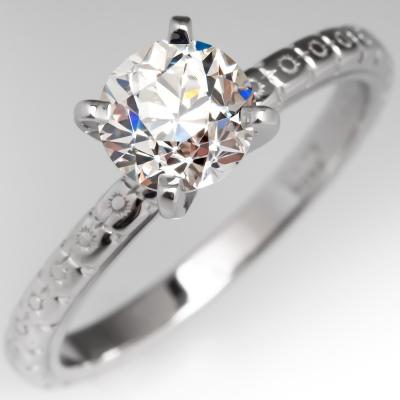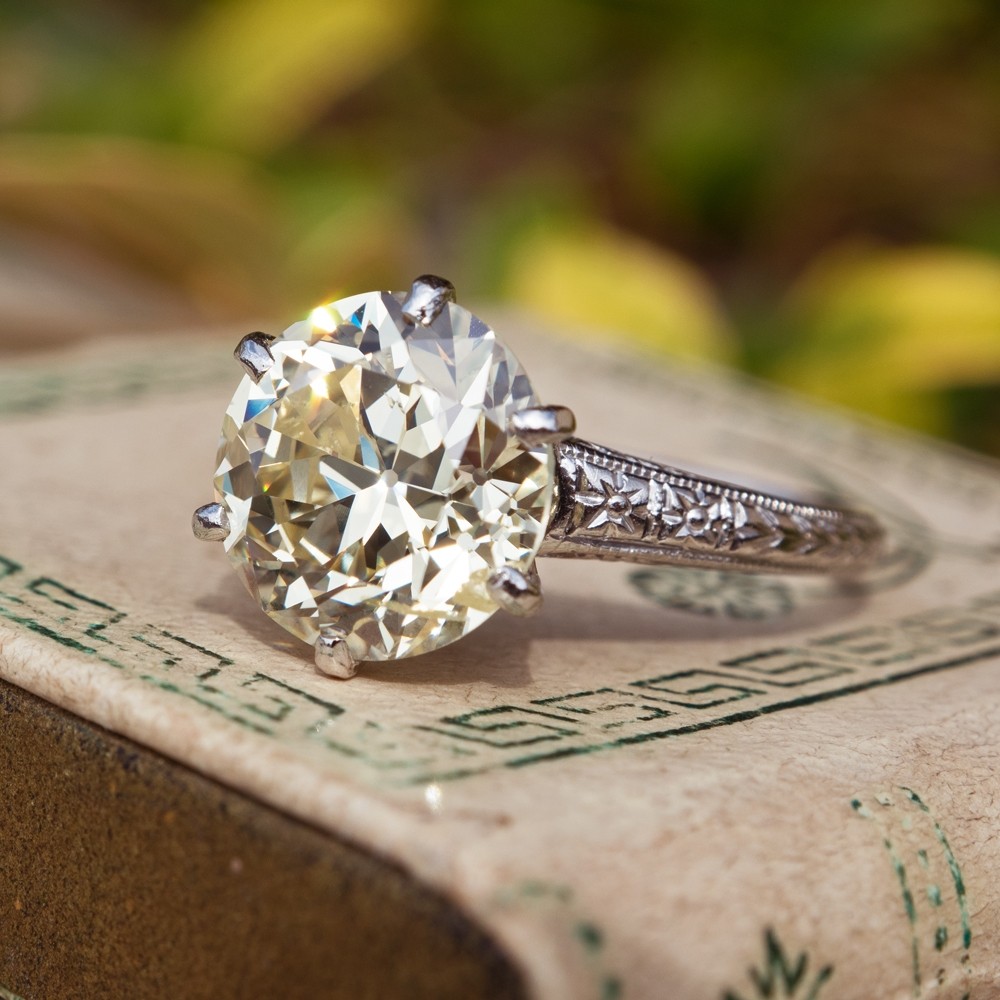
Posted in: Collecting Jewelry
 1-Carat Diamond Solitaire
Carat weight refers to the mass of any given diamond or gemstone. It belongs to the industry quality factors called the 4Css. Jewelers use the 4Cs to compare one stone to another in order to determine value. In this article, you will learn the basics of carat weight, as well as a brief history of the term.
1-Carat Diamond Solitaire
Carat weight refers to the mass of any given diamond or gemstone. It belongs to the industry quality factors called the 4Css. Jewelers use the 4Cs to compare one stone to another in order to determine value. In this article, you will learn the basics of carat weight, as well as a brief history of the term.
Abbreviations for Carat Weight
When reading a jewelry appraisal or gemstone grading report, you will find several abbreviations denoting different aspects of Carat Weight. The most common abbreviation, ct, simply means carat. Ct denotes the carat weight of a single diamond or gemstone. Another abbreviation, cw, also refers to the weight of a single stone. When specifically discussing diamonds, some experts use the abbreviation dw, which stands for diamond weight. Finally, experts use the abbreviation ctw (carat total weight) to denote the weight of all the diamonds (other gemstones) incorporated into a piece of jewelry. 2-Carat Diamond Solitaire
2-Carat Diamond Solitaire
What is Carat Weight?
Specifically, a carat represents a unit of mass which equals 1/5 of a gram, or 200 mg. Translated into ounces, one carat equals 0.007 ounces. (source) Experts divide each carat further into points. Each point represents 1/100 of a carat. Though carat weight is always written as a decimal, jewelers might refer to weights of less than 1 carat as points. For example, they may call a diamond weighing 0.50 carats a "fifty-point" diamond. Experts measure diamonds and gemstones with extreme precision, calculating mass to the thousandth of a carat. However, jewelers round to the nearest hundredth for description purposes. When a stone weighs greater than one carat, jewelers typically drop the term point. For example, they will say a diamond weighing 1.57 carats, is "one point five seven carats." (source)Carat v. Karat
Carat solely designates the weight of diamonds and gemstones. By comparison, karat denotes the purity of gold. Experts define pure gold as 24 karats. Each karat, then, represents 1/24 of the whole. Pure gold proves difficult for jewelers to work with, since it is so soft. Therefore, metalsmiths mix it with other metals to improve hardness. For example, they often add copper or silver to pure gold to produce a stronger alloy. Let's look at 18k gold as an example of how karat works. First, the math: 18 divided by 24 is 0.75 (75%). Therefore, 18k gold contains 75% pure gold. For the remaining 25%, jewelers often add some combination of copper, silver, zinc, and/or nickel. (source) Again, though carat and karat sound the same, the first denotes weight of a gemstone while the second denotes purity of gold. 3-Carat Diamond Solitaire
3-Carat Diamond Solitaire
History of Carat Weight
Long, long ago, merchants used carob seeds as a means to measure gemstones. At the time, they believed one carob seed weighed precisely the same as another. Of course, with the invention of more precise scales of measurement, this assumption proved false. By this time, the name carat stuck, tracing its roots all the way back to the Greek word for "carob seed." Prior to the 1500s, merchants used the carat to measure gold. Then, in the 1570s, diamond and gemstone merchants adopted the measurement for loose stones, as well. Over time, each country defined a carat differently, as they developed their own ways of more precisely measuring the weight of gemstones. For example, the Board of Trade in the UK designated the carat in grains, roughly 3.170 grains. In 1888, the Board adopted a new standard of 3.168 grains, which converts to approximately 205 grams. In 1871, the Syndical Chamber of Jewellers in Paris proposed the adoption of the international carat of 205 mg. (source) The Syndical Chamber of Diamond Merchants adopted the international carat as their standard for weighing gemstones and diamonds in 1877. (source) In 1907, the Fourth General Conference on Weights and Measurements adopted the metric carat, established as a weight of 200 mg. (source) To this day, the metric carat stands as the industry standard. ~Angela Magnotti Andrews4 years ago
59 view(s) 